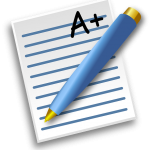With only the resources available in the first half of the course (textbook and all additional assigned sources), answer the following prompt in an essay:
Aside from the Reformation, what other events contributed to the diminished authority of religious institutions and the dramatic ascension to power of the state in Europe between the years 1000 and 1715? Where is the notion of separation of church and state first observed? How does this doctrine along with other major events factor into this religious versus secular dichotomy? Why did kings prevail over popes? What were the geopolitical ramifications of this transfer of power? How did the map of Europe look by the end? As part of this examination of religion and politics, what was the long-term significance of the rise of the Ottoman Empire and their inroads into traditionally European lands? What were the consequences for Europe and the Mediterranean world following the Muslim victory of Constantinople in the East and their loss of Andalucía in the West?
Because we have already covered in depth the Reformation and Counter-Reformation, neither should factor substantially into your response. With an essay topic of this nature, both need to be mentioned, but that is all: Do not spend more than a paragraph combined, as further exploration will move away from the prompt and detract from your overall treatment of the subject, placing you firmly back into well-trodden territory. As always, I am interested in new content and ideas and how you can express them effectively.
As with the first essay, when evaluating this topic, you have complete discretion as to the best way to proceed. For a complete response, I recommend some combination of the following methodologies to analyze the questions: social, cultural, political, and economic. Ultimately you will decide the approach for the best results, so feel free to examine this as you see fit.
From this prompt, you will create your own thesis to serve as the central argument in your essay. Do not simply restate the questions in lieu of an actual statement. Part of writing an essay is constructing an argument to guides your work: the stronger the thesis, the stronger the paper.
As this is an integrative essay, be sure to use a variety of sources that we have covered to create a robust paper. Because I want to see how well you have understood all the materials presented in the course, working from the textbook only will not be satisfactory.
The requirements for the essay are: 2,000 words (not including quotations, references, citations, or footnotes; a complete response will exceed this word count), 12pt Times New Roman font, and formatting in accordance with The Chicago Manual of Style. Concerning citations, regardless of the particular version of CMS you select, you must provide a page number with all citations when citing a paginated source; simply using the author’s last name and year as with APA is not sufficient. Your paper will be evaluated using rubric in the syllabus.
Click on the “Final Integrative Essay” link above to submit your paper as either an MS Word file or PDF.
Following the example of the first essay assignment, these links are resources available to you when writing your Final Integrative Essay. The purpose of the paper is to answer the prompt completely using multiple sources from the course. While there is no firm rule for how many of these a paper should have, I recommend consulting at least six. A strong essay is going to integrate not only information from experts and institutions that specialize in these fields, but also find and contextualize an artifact or two from one or more of these collections. This assignment benefits from robust research and creative thinking. All sources must be cited using The Chicago Manual of Style.
As before, you might see the following message after clicking on a link:
The target page can not be opened within the content frame due to security reasons. Click the link below to open the page in a new window.
This is only a generic system response that you can disregard. Just click the copy of the link below the message to visit the website.
I have arranged all links alphabetically:
Byzantine-Ottoman Wars: Fall of Constantinople
Council of Constance: Sacrosancta, 1415
Decree of the Council of Pisa, 1409
Ibn Abd-el-Hakem: The Islamic Conquest of Spain
Ibn Batuta (1307-1377 CE): Travels
Islamic Spain: When the Moors Ruled in Europe (Alhambra, Granada)
Joan of Arc: Letter to the King of England, 1429
Levy of Troops for Wars in Bohemia,1422
Spain cracks King Ferdinand’s 500-year-old secret code
The Expulsion from Spain, 1492 CE
The Golden Bull of Charles IV 1356
The Ottoman Empire, Power and the Sea
As you research artifacts as primary sources to strengthen your essay, I encourage you to explore the following websites from these leading museums and institutions, as they contain not only some of the foremost artifacts in this area of study, but also have many informative articles and educational resources. Please note that you will recognize many of these from the first essay assignment, as these museums have vast collections that span the history of our entire course:
Phoebe A. Hearst Museum of Anthropology
University of Pennsylvania Museum of Archaeology and Anthropology


